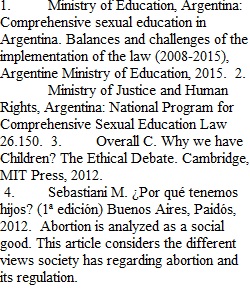


Q Add two entries of 250 or more words each to your Research Journal. Write two Research Journal entries on a potentially useful source you have found in your research. The entry will include the following four types of information in the order that follows: • MLA citation (for help, see http://columbiacollege-ca.libguides.com/mla) • One paragraph summary of the source • One paragraph analysis of the source's credibility • One paragraph reflecting on how the source shaped your search for a research question and related perspectives Find tips on how to do a journal entry and examples of journal entries below: ***** Here are tips on how to do each section of the entry: MLA CITATION (Use this format, or consult citation websites like Purdue Owl): Last Name, First Name. “Title of the Article.” Container (Newspaper, Magazine, Website, or Journal), version or vol. #, no. #, year, pages OR date. Database (SIRS, Proquest, etc.), doi (digital object identifier) or URL—don’t use the URL from the database. If you’re citing a website, use the url). Accessed day Month year. SUMMARY OF YOUR SOURCE: 1 paragraph. Include attributive tags or parenthetical notations in EVERY sentence. Proper attribution will help you avoid plagiarism AND smoothly integrate your sources into your Viewpoint Synthesis. ANALYSIS OF YOUR SOURCE: 1 paragraph. How credible is the source? Consider the writer's credibility, the credibility of the publication where you found the source, and how the source was written. Is the source intended for a particular audience, and would that audience grant the source more or less credibility than you do yourself? RESPONSE TO YOUR SOURCE: 1 paragraph. ADDRESS SOME OF THESE QUESTIONS: How does this source influence your search for a quality research question? What surprised you about this source? Are you seeing different perspectives on an issue you might want to make the focus of your question? Have your views changed at all? How? What do you need to research next? Where will you look for that research? ***** Here are two examples of a completed research journal entry: SOURCE 1 CITATION: Slahi, Mohamedou Ould. Guantanamo Diary. Edited by Larry Siems, Little, Brown and Company, 2015. SUMMARY: This originally hand-written memoir covers Mohamedou Ould Slahi’s 2002 arrest and subsequent imprisonment in Jordan, Afghanistan, and finally the detention center at Guantanamo Bay. Slahi recount the “special interrogation plan” that he was subjected to in painstaking detail. Though the memoir was completed in the summer of 2005, it wasn’t officially declassified and published until 2015. ANALYSIS: I’m not sure how a source could be more credible on any topic that Slahi is on “enhanced interrogation” and the psychological weight of torture. The facts that the manuscript was composed by hand during the authors’ imprisonment and that it took so long for the manuscript to be declassified, and the number of black-barred redactions present in the book suggests, that the information was considered sensitive (and so somewhat reliable) by sources beyond me. RESPONSE: I think what I gathered after reading through chunks of this story is a sense of the sloppiness of the enhanced interrogation program, and the desperation that was so obviously behind it. On one hand, it’s difficult to believe that Slahi was held for fourteen years with absolutely no evidence to suggest his guilt. On the other, it’s hard to imagine he could’ve maintained a false innocence through such constant abuse. SOURCE 2 CITATION: McCoy, Alfred W. A Question of Torture: CIA Interrogation, from the Cold War to the War on Terror. Metropolitan Books, 2007. SUMMARY: As the title states, this book details the development and usage of the CIA’s torture programs, from their early beginnings with the Cold War through 9/11 and the War on Terror. In his introduction, McCoy states that his goal is to “use the historian’s tools to trace the hidden history of torture in America...and expose intertwined aspects of its perverse psychology.’ ANALYSIS: Alfred McCoy is an alumnus of the Kent School, Columbia College, and Yale University. He is currently the professor of history at the University of Wisconsin-Madison. The book “A Question of Torture” was published as part of a series called The American Empire Project, which critiques the US’s domineering foreign policy. This book is annotated exhaustively and cites an impressive number of sources, but there is a bias clearly present from the first page. RESPONSE: Somewhere around the third chapter, when the term “willful mass blindness” was used, this started to feel like a cheap conspiracy report, and I had to remind myself that I was reading for background on a viewpoint and not for nonpartisan information. I was lead down a few interesting rabbit holes while reading, namely the Stanford Prison Experiment and Project MKUltra. I can’t say Dr McCoy sold me on the necessity of pacifism, but he brought the eloquence and finesse that Diane Fienstein is (I think) missing to his side of the debate PreviousNext
View Related Questions